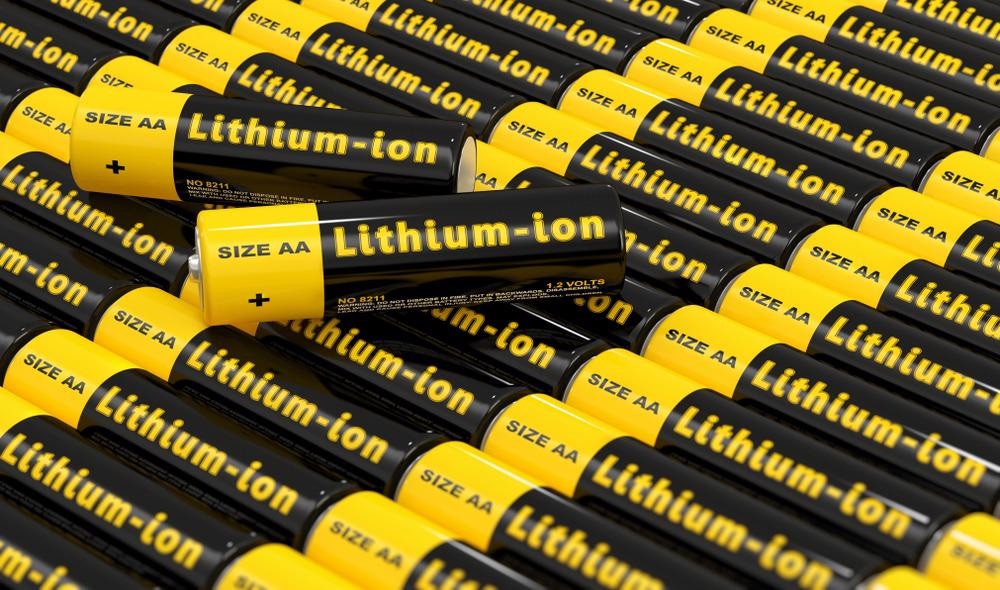Amongst the various battery technologies, lithium-sulfur batteries have emerged as next-generation solutions for power harvesting and storage devices. The authors of a pre-proof study in the journal Energy Studies Materials have modeled the polysulfide chains in these batteries to explore their potential.

Study: Modeling of the temporal evolution of polysulfide chains within the lithium-sulfur battery. Image Credit: Lightboxx/Shutterstock.com
Lithium-Sulfur Batteries
Lithium-ion batteries are one of the key technologies helping to move humanity away from its over-reliance on fossil fuels and mitigating the effects of climate change.
Lithium-sulfur batteries have been explored in recent years for their potential as next-generation power harvesting and storage devices. They belong to the group of technologies known as post-lithium-ion batteries.
Lithium-sulfur batteries are expected to be cost-effective, and they display a high specific capacity (1672 Ahkg-1) and a theoretical specific energy density of approximately 2600 Whkg-1. The abundance of sulfur means that resources for these batteries are not as limited as lithium. Additionally, these batteries are inherently safe.
However, there are several challenges with the technology that hampers its widespread commercial uptake. Lithium-sulfur batteries suffer from low performance, limited life cycle, low coulombic efficiency, and capacity fading. In practice, the specific energy density of lithium-sulfur batteries is limited to around 460 Whkg-1.
In a lithium-sulfur battery, the energy is stored and released through a series of phase transitions. Compared to the intercalation process in lithium-ion batteries, this is categorized as a conversion mechanism. Lithium-sulfur batteries contain conversion materials that are fully restructured during lithiation and delithiation. A structural rearrangement and recombination of the chemical conditions with the battery occurred.
In the conversion process, there are key challenges that correspond to factors such as long cycle life, achievable capacity, and limitations in power capability. The performance of devices is dependent on design, which is reflected in the electrolyte to sulfur and carbon to sulfur ratios. Much of the current literature focuses on improving material properties, sulfur utilization, and the control of complex intermediates.
Current research goals are to find a compromise between challenges and requirements. By achieving this goal, lithium-sulfur batteries can be seriously considered for applications in sectors such as the automotive industry, which is a key industry driving the development of lithium-ion batteries. However, a better understanding of the complex mechanisms which occur during conversion processes is necessary for the uptake of this technology by the automotive industry.
Utilizing Mathematical Models
Mathematical models are well-suited to understanding the complex mechanisms at play during the conversion processes in lithium-sulfur batteries. Different models have different aims, with one aim being to validate material composition using simulations to help modify and optimize cell design.
However, precisely detecting the state of charge within lithium-sulfur batteries is currently challenging. Coulomb Counting, which is widely employed for lithium-ion batteries, is insufficient due to the low coulombic efficiency of lithium-sulfur batteries. The practical application of these batteries depends as much on the development of control algorithms as it does on research into the chemical composition of batteries.
The Study
The pre-proof study in Sustainability has presented a novel mathematical model intended for developing electronics that can monitor lithium-sulfur batteries. A zero-dimensional model was selected for the research due to a trade-off between computing time and accuracy (models with a reduced order need less computing time compared to higher-order models which makes them easier to embed in control algorithms.)
The model presented by the authors describes the simultaneous evolution of polysulfide chains within a prototype pouch cell during discharge. The zero-dimensional model does not consider transport limitations during the process. The model is based on research by Marinescu et al. and Kumaresan et al. The focus in the model is on the four transformation phases of the lithium-sulfur battery: solid-liquid, liquid-liquid, liquid-solid, and solid-solid.
A key feature of the model’s methodology is the direct utilization of a first-order reaction equation to provide a general mathematical form for the polysulfide chain’s temporal evolution. The concentration of the majority of the reduced sulfur species is determined by the discharge overvoltages and the quasi-OCV. Computed overvoltage is used as an input rather than applied current during the course of the discharge process. Kinetic limitations of the LaMer model, Faraday’s law, and the Butler-Volmer equation formed the basis of the mathematical approach.
The model was tested and validated using pouch cells. GITT measurement results demonstrated different relaxation rates, supporting the model. Different constant current rates and a dynamic load profile were used to verify the measurement. Precision was investigated by comparing the results of testing and verification with state-of-the-art estimation algorithms. The authors have stated that the precision is highly dependent on the model’s choice of parameters.
Moreover, the authors have demonstrated that the removed capacity is similar in range to that of coulomb counting. Based on the results of the study, the authors have stated that this approach could be useful for the development of lithium-sulfur battery monitoring systems. Finally, simultaneous research into materials and algorithms could facilitate a swifter entry of this technology into the commercial market, according to the study.
Further Reading
Brieske, D.M et al. (2022) Modeling of the temporal evolution of polysulfide chains within the lithium-sulfur battery [online] Energy Storage Materials [pre-proof] sciendirect.com. Available at: https://www.sciencedirect.com/science/article/abs/pii/S2405829722000769
Disclaimer: The views expressed here are those of the author expressed in their private capacity and do not necessarily represent the views of AZoM.com Limited T/A AZoNetwork the owner and operator of this website. This disclaimer forms part of the Terms and conditions of use of this website.